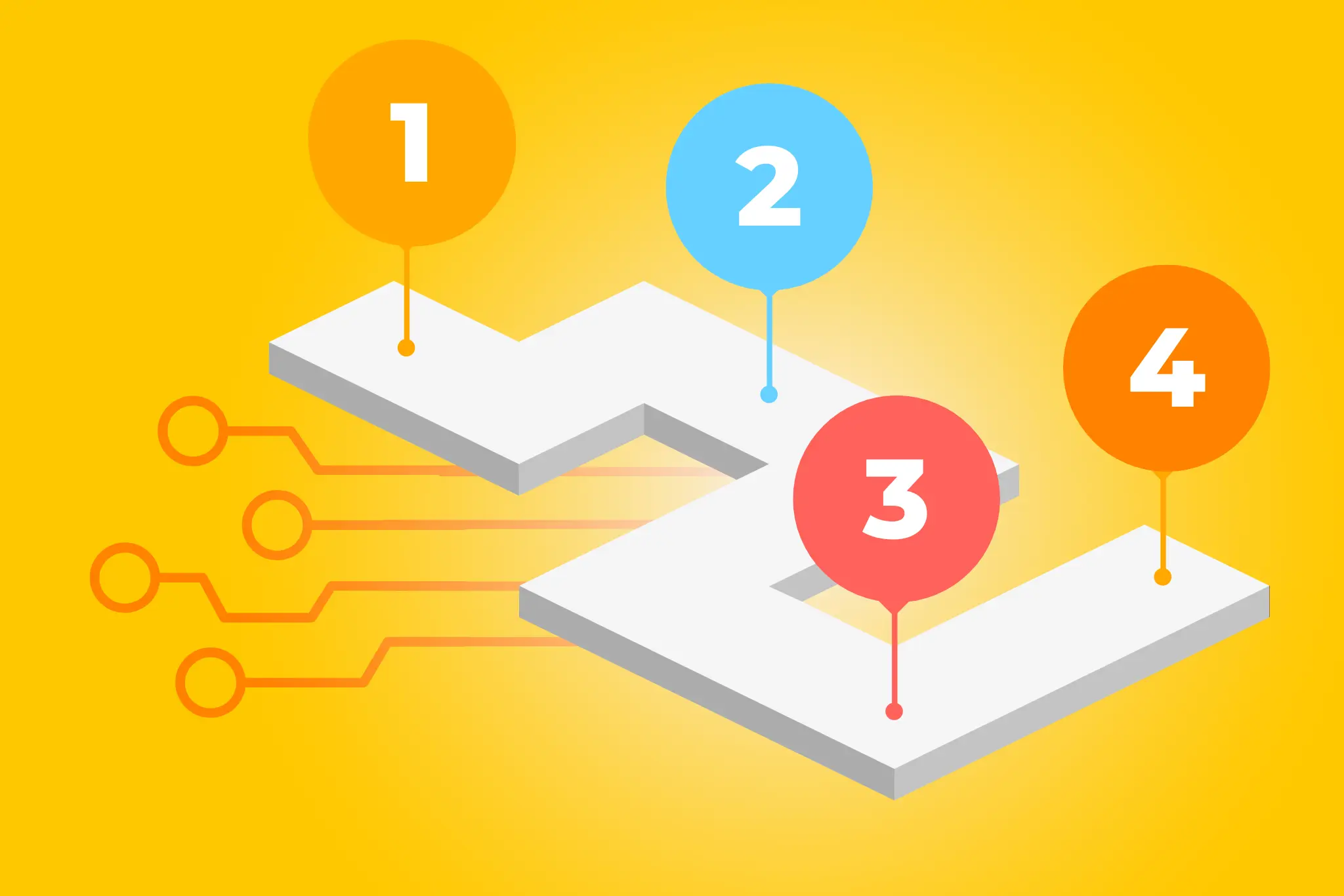Listen to this article:
Today, every company is working with some form of technology. In fact, according to Gartner, 91% of organizations are engaged in some form of digital initiative. However, when a company works on digital projects, it does not necessarily mean that they are digitally transforming. Realizing the difference between digital optimization and transformation is key in determining your company’s digital transformation roadmap.

What is a digital transformation roadmap? In simple terms, it is a comprehensive plan that moves your organization or department from point A of using your current digital tools and processes to point B of using newer digital and tech tools. The roadmap outlines all the necessary details to ensure a successful digital transformation. This includes details such as the existing and new technology, people involved in making the transformation possible, and processes.
➡️ Read also: Digitalizing your Legal Department: Three Questions to Consider Before You Get Started
Why such urgency?
The 2020 pandemic pushed many companies to rapidly transform their businesses as a large percentage of the workforce had to work remotely. The urgency was high due to the necessity of staying home. In fact, according to a McKinsey report, the pandemic accelerated digital transformation by years.
Having a digital transformation roadmap will help in case there is another urgent need for a rapid transformation. It also helps your organization keep up with digital trends and be more adaptive to new digital tools and changes. Finally, a digital transformation roadmap also has a lot of essential information that can help you update your software, digital tools, and more to stay technologically relevant.
Where does digital transformation fit in your organization?
In order to outline and have a roadmap ready, you need to understand where digital transformation fits into your organization. How important is digital transformation for your organization? Can you manage if you are not keeping up with digital trends? Which departments need to be always digitally updated? These are all important questions to keep in mind, especially in today’s age where almost every business is operating digitally.
What does a digital transformation roadmap look like?
Once you understand where digital transformation fits in your organization, you can begin to work on the roadmap. Your roadmap will have the following:
- An inventory of current technology, software, and other digital tools: This would be a list of each department, the digital tools and software they use, how they are currently being used, and their lifecycle.
- Challenges: What are the current challenges your organization is facing with the existing tools? How can you address these challenges in order of urgency and priority?
- Improvements: Look out for opportunities to implement new technologies and digital tools. Keep this in line with current digital trends.
- Think about the future: How much should you invest in new technologies? Will something new replace it within a short span? Map out timelines and lifecycles of the tools you are hoping to implement.
- Objectives: State clearly the use of the new tools you are looking to implement, and which department or people will be responsible for any troubleshooting, questions, updates, and overall responsibility.
- Milestones: Have key milestones on the roadmap leading up to the implementation of these new digital tools.
These aspects will help you have an overview of your way forward digitally. The key thing to remember with a digital transformation roadmap is that it is just that – a map. This means that as you get to point B of your digital transformation journey, you need to start planning to get to point C, and so on.
➡️ Read also: Digitalizing Legal Departments: Tips on Implementing Your Legal Tech
How to ensure major objectives are met
A roadmap is a communication tool that you can use within your organization. The details outlined above can be accessible to all stakeholders involved in the digital transformation of your company. You can use the details to assign specific tasks, create timelines, and overall project management.
Make sure to share the roadmap with the leadership team to ensure them that there is a secure plan in place. They will also be able to support and guide you when required. The key to implementing a digital transformation roadmap successfully is in the communication between stakeholders involved, and in mapping out as many relevant details as possible to ensure the plan is clear and transparent.
In summary, a digital transformation roadmap is a comprehensive guide for your company’s seamless and continuous digital transformation. It helps keep up with the constant new emerging trends and technology while keeping the transformation relevant to your industry. A detailed map with roles and responsibilities, milestones, and timelines can help the transformation be seamless. Clear communication and involvement of the leadership are also key factors in the creation of a successful digital transformation roadmap.


